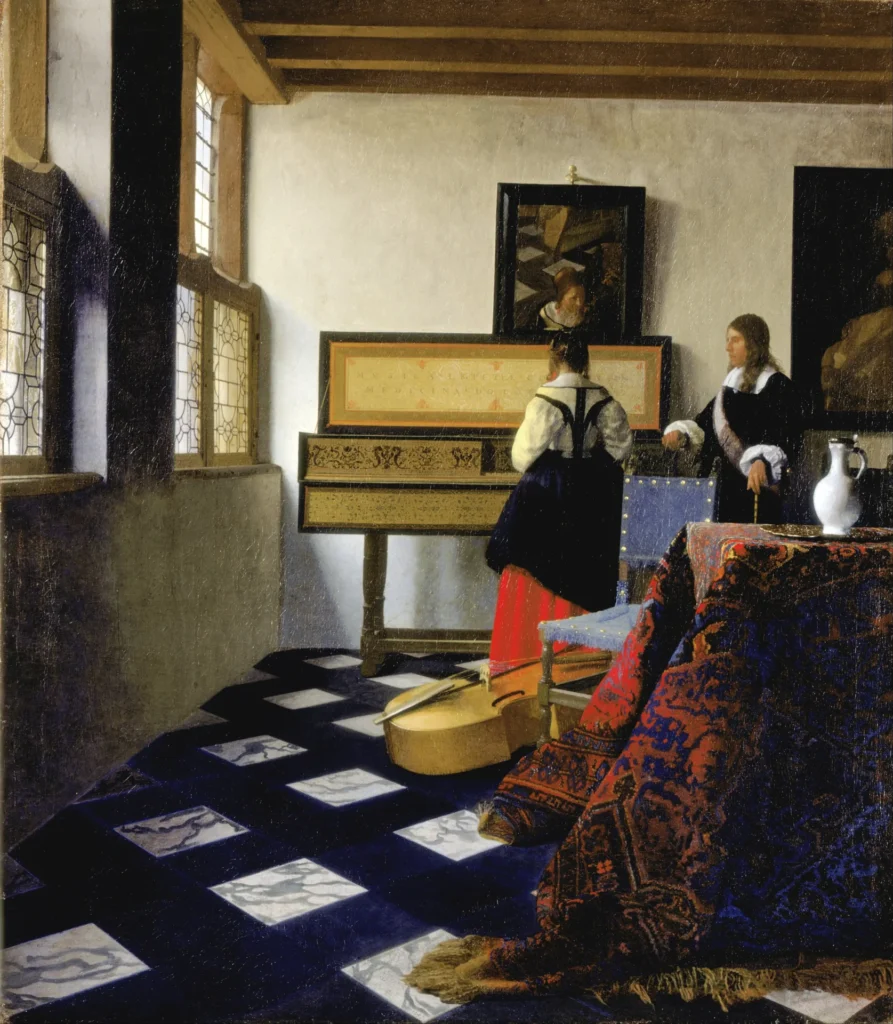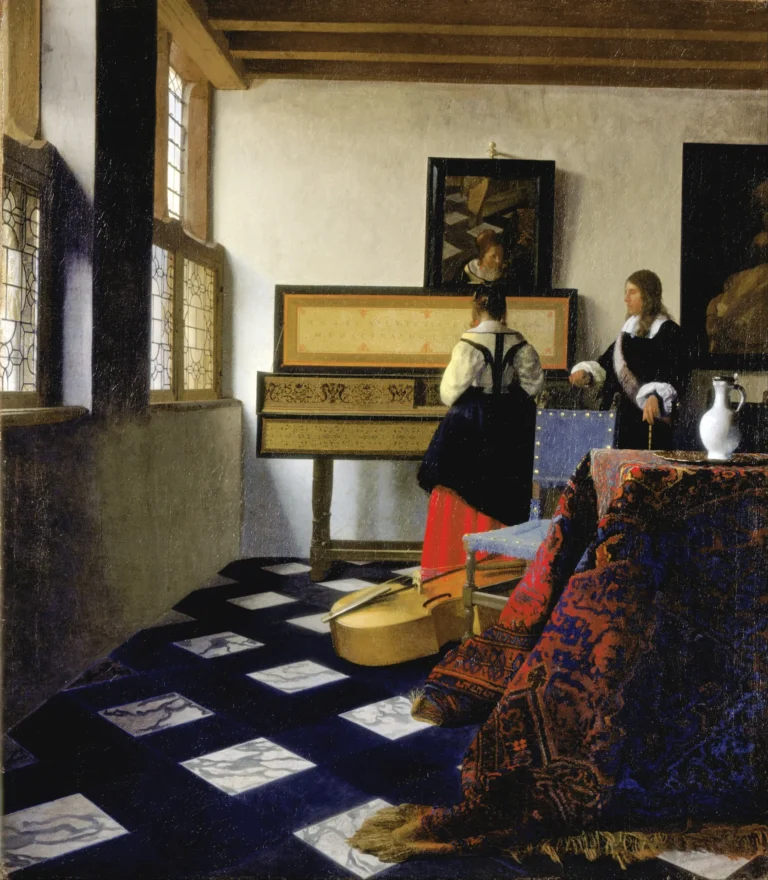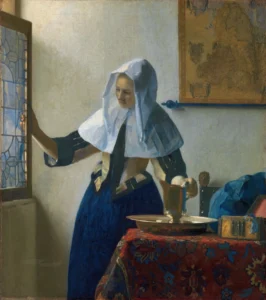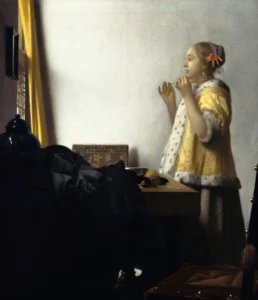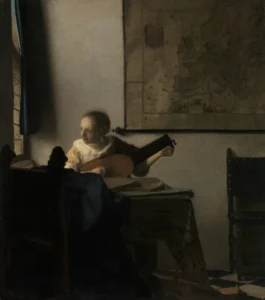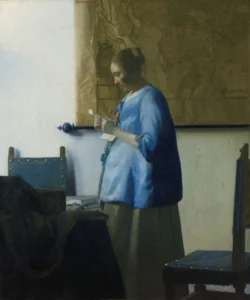Lady At The Virginal With A Gentleman
Lady at the Virginals with a Gentleman, also known as The Music Lesson, is a remarkable painting by Vermeer showcasing a young woman engrossed in playing the virginal while a man stands beside her, involved in song. The intricate details of the room, the geometric balance, and the serene atmosphere reflect Vermeer's unparalleled skill. Symbolically, the artwork represents love and harmony, with the inscription on the virginal highlighting music's dual role as both joy and comfort. Its use of ultramarine pigment further emphasizes its prestigious origins, making it a treasure in the Royal Collection today.
1662 - 1665
About the Artwork
Painted in the mid-1660s, Lady at the Virginals captures a treasured moment between a couple communicating through music and art. The elegantly dressed woman playing the virginal, a popular instrument of the time, embodies the grace and refinement prevalent in Dutch society. The man's presence and their interaction suggest a bond built on shared passions. Throughout history, this piece has undergone a transformation of recognition, initially misattributed and later celebrated as a quintessential Vermeer creation. Today, it draws viewers into its narrative of love, artistry, and the profound effect of music on human connection.
Did You Know
The inscription on the virginal in the painting translates to ‘Music is a companion in pleasure and a balm in sorrow,’ emphasizing how music plays a crucial role in expressing emotions and connecting people.
Vermeer’s extensive use of ultramarine pigment in this artwork not only reflects the wealth of the patron but also illustrates the skill of the artist, as it was one of the most expensive pigments available during the 17th century.
Initially misattributed to Frans van Mieris the Elder when it entered the Royal Collection in 1762, The Music Lesson was only correctly identified as a Vermeer piece in 1866, demonstrating the shifting perceptions of art historical attribution.




